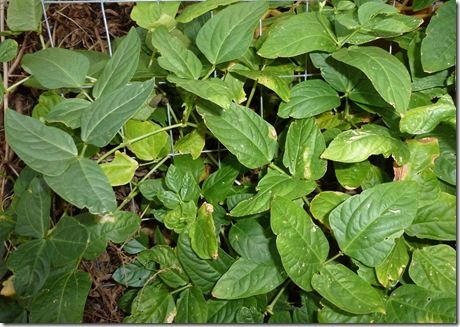Vigna unguiculata var. sesquipedalis
For many years now, I’ve been ‘growing on’ an unusual long and thin green eating bean called a ‘snake bean’. This year I’m regenerating my seed stock, so have let the beans remain on the vine to dry out, ready for the simple business of harvesting the seed.
Snake beans are unrelated to green (French) climbing beans, bush beans, and runner beans, evolving as they have in South Asia from the cowpea (V. unguiculata) which arrived there from Africa in early times. Cowpeas have short pods used for dried beans, while snake beans are best cooked young and tender the Chinese way – stir-fried with a little oil and garlic, ginger and a splash of soya sauce at the end. Snake beans have a stronger nuttier flavour than ordinary kitchen beans.
The fancy Latin name sesquipedalis means “one and a half feet in length”; a length that is easily attained in the home garden.
Snake beans are also called the Yard Long Bean and Asparagus Bean.
My snake beans are the vigorous climbing variety with the red-brown seeds (the beans are very narrow compared to regular green beans – about half their diameter). Apparently there are dwarf varieties about, and another climber having black seeds grown around Mudgee in New South Wales in eastern Australia.
Snake beans ‘keep on giving’, so are best cut off the vine rather than pulled off (which tends to break the vine). They like lots of moisture, warm soil and rapid growth. I grow mine up a square-mesh wire pegged at one end and sloping to the top of a frame a few metres high. This way the beans hang down and can easily be found by the cook.
Snake bean flowers are pale mauve and borne in pairs at the end of an elongated stem.
As always, much of the valuable material in this article was gleaned from my much loved and much-thumbed copy of the Seed Savers’ Handbook.



1 comments:
I grew them one year but found them to be a bit stringy (other people have said theirs weren't so it may just have been where I got my seeds from).
Post a Comment